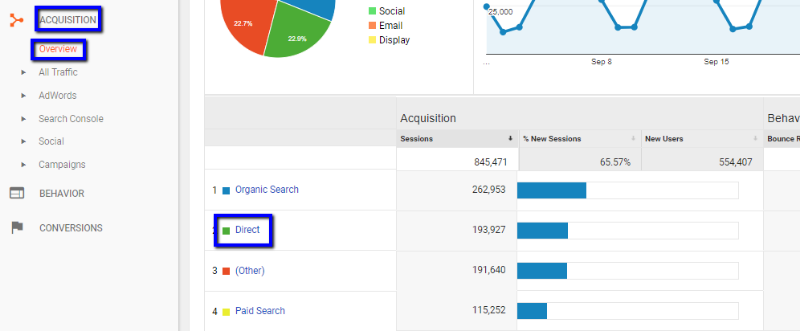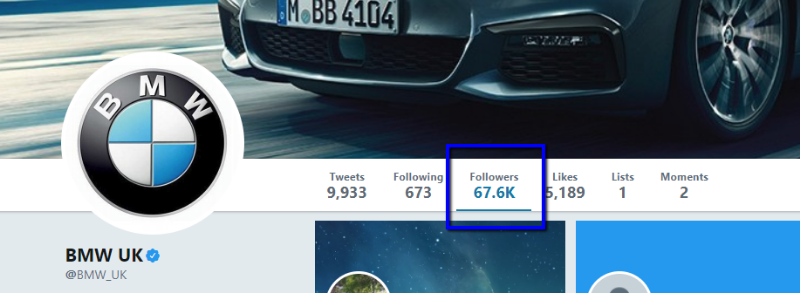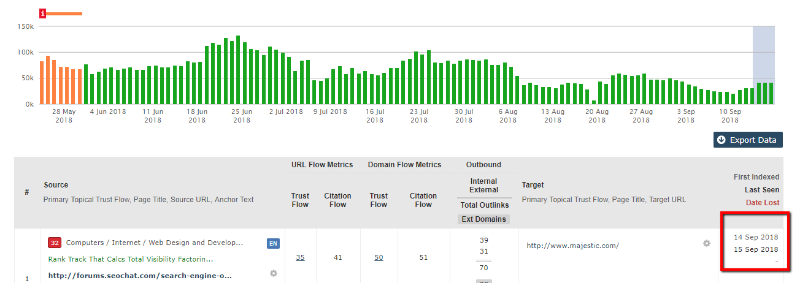
It’s easy to see why more and more internal stakeholders are keen on measuring brand awareness, because it can clearly signal a rise in demand for a brand or product. However, how you measure brand awareness isn’t so straight-forward, and neither is communicating the business value. This post will help digital PRs & SEOs identify a collection of metrics you can measure before, during and after a campaign to communicate the value of your work to a variety of stakeholders.
Traditionally, brand awareness has been concerned with brand recall and purchases at the point of sale, but offered little to digital marketers. However, most of the people working in this field aren’t measured on in-store purchases, and often, the companies we work for don’t have a retail presence. Therefore, we need to focus on digital KPIs that we can impact and those that make a real difference to the companies we’re working with.
Often, the result of running a campaign, whether that be for links, placements, social shares, etc. all contribute to brand awareness. It’s the umbrella that can house all the soft metrics we often report on as digital marketers. This is where brand awareness as a standalone metric creates a shift in how marketers, particularly those that work solely online or for online-only companies, can report on their work and include all of the natural outcomes of a digital campaign. Communicated correctly, this also puts you in the mind of wider marketing teams, not just SEO or PR because, aside from revenue (which can include various hurdles to correctly report on), brand awareness and its nature (up or down) is a metric all marketing teams can understand and gives you the chance to spread the word of your work.
Here’s a scenario I’ve often found myself in. A client wants X links from you. Not only is the decision making process behind ‘X’ often flawed, but it also negates a bunch of other outcomes that are a direct result of achieving those links. If your tactic to build your target links is through something like a Digital PR creative campaign, then it’s likely that not only have you got the links, you’ve also got placements (write-ups with no link), social engagements, referral traffic, direct traffic and people searching the brand to find out more. That’s a ton of value not being communicated when your report back ultimately concludes ‘we achieved 43 links in total’.
This is where you need to start reporting on brand awareness, and these are the metrics to focus on:
- Share of voice
- Direct traffic
- Google Trends
- Social followers
- Search volumes
- Earned Media
Share of Voice
Measuring the voice of the consumer is a vital component of brand awareness, and for communicating the impact of your work. The best channel I’ve found to do this is through social. By measuring a brand against its competitors on social, you can measure how that changes over time, with a clear relationship to the work you’ve been doing. I like using social platforms for this because it’s the only true representation of what customers are actually talking about.
There are other methods of calculating Share of Voice (SOV) digitally, such as rankings and PPC, but those disciplines take into account a range of other factors that then hide the value of what you’ve done. For instance, if you earned 100 links for the Ritz-Carlton, whilst reporting on ‘hotels in London’ rankings, that’s a fantastic amount of links (nice work!) but you’re still not in the same league as Tripadvisor or the other aggregators in the SERPs. Ultimately, you haven’t moved the needle and your share of voice won’t look as positive, yet thousands of people could be discussing the content socially. It’s a much more direct relationship.
Direct Traffic
Assuming you have Google Analytics or another tracking software setup (please say you do), you can measure how and if direct traffic to the site has changed before and after your campaign. For large companies, changes can be the result of various factors (TV campaign, spokesperson released a statement, etc.) but it’s definitely worth looking into when you’re wanting to coherently sum up results.
To do so in GA, simply select a period of time after the campaign went live, compare for the same period of time beforehand, then navigate to Acquisitions > Overview > Direct.
To factor out seasonality, you can compare the percentage growth between the same dates last year, and then calculate the percentage change difference between the two, as below:

Google Trends
Google Trends can be a great tool to help communicate brand awareness, and you can use it based on a key phrase from the campaign, the brand or a product.
The historical data is excellent, giving you the ability to reach back more than 10 years. The data is also relative, so it essentially benchmarks any spikes as a result of your campaign against what would be considered ‘normal’ activity.

Including this in your report, especially if it’s a product or the brand that key stakeholders will want to know the performance of, is such an easy way of visually communicating your impact. Although not definitive, I’d suggest including a screenshot of Google Trends in your report.
Social Followers
A nice easy number to collect. But, the key here is benchmarking beforehand and knowing what the number was before you launched your campaign, and if you can, what a normal pace of growth looks like for the social profiles (for Twitter, you can use Twitter Analytics and measure changes over time).

The idea here is to report on how your work has (hopefully!) increased the rate of social followers the company is receiving. If your campaigns are raising the profile of the company or/and has a strong social element, it’s likely that more people will start to engage with the brand and follow it on social channels. Reporting on these number provides another strong correlation between the work you’ve been doing, and another metric for communicating impact.
Search volumes
Using Google’s own Keyword Planner, you can benchmark a variety of terms before your campaign starts and track changes as the campaign progresses.
One of the benefits of Keyword Planner is that it can also track historic and seasonal data, stretching back 12 months. By doing an export when you start, you’ll want to do the same export after 3/6/12 months and post-campaign (depending on how long you report on) so you can start to overlap and compare data using Excel with a simple VLOOKUP.
To do this, you’ll want to track particular keyword groups and track changes to them over time. The keywords you pick will be entirely dependent on the campaign you’re running or if you’re being targeted at ranking improvements in a particular area.
For example, if your campaign is raising awareness of an event, you’ll be able to track a subset of keywords surrounding the event and map how search volumes have changed from the start of your campaign to the end.
You can also then report on your anticipated traffic based on your ranking position. To do this, I usually track rankings through SEMrush and use AWR’s CTR Study to figure out my numbers.
The AWR study will give you the expected click-through-rate for each ranking position in the top 20. You then multiply the CTR for each ranking position by a keyword’s search volume (SEMrush offer this but you can also use the Google free Keyword Planner if you have an Adwords account) to get your share of the traffic. Do the same over time, and simply subtract the expected traffic today vs your pre-launch date to see if that change is positive or negative. This will also take into account the search volume growth, if your campaign had an impact.
Earned Media
Reporting on the links and placements we receive from a campaign is an SEOs nuts and bolts, and likely something most of us are already doing. However, not all stakeholders will understand the value of links from different domains, let alone start to consider their relevance, but they still know that a link from The Huffington Post means the project went well. Digital PRs might be a little newer to tracking links so I’ll cover how to do it.
There are a wide variety of tools you can use, but Majestic have always been in the top 3 and are by far the first choice for the most forward thinking SEOs I know. By crawling hundreds of billions of URLs, the system allows you to input a URL, domain, subdomain, etc. and retrieve a comprehensive list of links your campaign has received.
Often, the difficulty many content marketers run into at this point is that they may not know if a publication has linked to the piece itself (if an asset or post was hosted) or the brands homepage. For well-known brands, this can make things tricky. So we’ll need to make sure we sort by ‘New’ links:

Using your clients root domain (Majestic, if you play your cards right…) you simply toggle the ‘New’ tab and can filter through dates surrounding your campaign or simply the latest links the system has discovered in the last few days.

As an SEO, I would also recommend that you use all the tools available to you to make sure you leave no link behind.
How you report on Earned Media is also another decision you’ll have to make, but that largely comes down to the company you work for and the metrics they value. I would often report on the TrustFlow of a link (one of Majestic’s link metrics) or Advertising Value Equivalent (AVE – an estimate based on how much it would have cost the company to gain a similar placement on a website).
Overall, brand awareness is a fantastic metric that collates a number of impacts and softer metrics into one home for reporting. It includes a subset of KPIs that various teams will be targeted with and puts it all into one place. Unless you have an extremely robust reporting setup able to track the revenue from each mention of your brand, coupled with changes in organic visibility and traffic, then brand awareness is a much simpler method of communicating your impact with the people you need to. This will be help you gain a promotion or retain a client by impressing people in a language they speak.
- Measuring Brand Awareness for Digital PRs & SEOs - October 9, 2018







Thanks for sharing this Darren, really interesting discussion points.
Share of voice in particular is something I’m interested in, as is the idea of using digital PR to create demand and credibility in a target topic. STAT is a useful tool for measuring share of voice compared to competitors and pertaining to your own domain, but it isn’t able to measure the share of voice impact of appearing on another site that outranks your own.
For example, we once had a client trying to rank for a highly competitive term and had got them into the top 10, but then a change in the market meant that SERP for that term was dominated by the news carousel. We identified the publications that featured in that carousel, pitched them an article and achieved the feature – which itself appeared in the news carousel for that target keyword. Our client was essentially outranking their competitors, but not with their own site… That’s where share of voice can become a little cloudy.
I’m also interested in how we attribute value through brand visibility (either via Keyword Planner, Trends or Search Console) if it is a smaller client. The gains might be very small numbers but even so, it would be interesting to consider the impact a digital PR campaign can have there.
In my opinion, links will always be a metric for digital PR success (be there explicit or, one day, implied), because links are what differentiates digital PR from traditional. But at the same time, we cannot ignore the value of traditional PR metrics; savvy digital PRs will, in my opinion, invest in strategies which capitalise on broader visibility and credibility metrics – I’m just not 100% sure how we make those measurable right now…
Thanks again for sharing!
October 10, 2018 at 10:29 amGreat post
October 13, 2018 at 7:20 pmThe brand awareness for small business is hard job.
Thanks a lot
[Link removed]
In the sum of all, you have written I totally agree in all.I’m also ORM expert and outside measurable marketing trackings software, there are indicators when you can say something is done good or bad and in the long or short term the results itself will show the wanted and expected results or goals [Link removed]
October 24, 2018 at 9:40 amToday all must focus more on Brand Awareness than ranking. But this is my opinion…